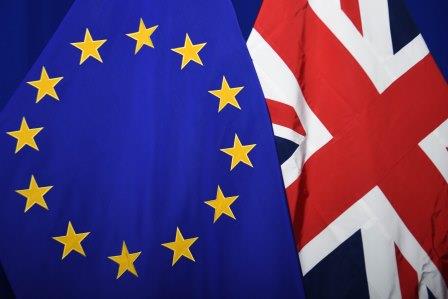What Brexit means for physical music fans in the UK and the EU
SDE does its best to understand how things will change

Today is the last day of the UK’s ‘transition period’ with the European Union and tomorrow the UK is no longer part of the EU. Since a global marketplace exists online for physical music, how exactly is Brexit – the UK’s departure from the EU – going to affect fans in the UK who shop online via businesses in EU member states (Germany, France, Italy etc.) and in turn, how will it affect those in the EU who choose to shop from UK-based businesses?
First, a proviso. The new rules are extremely complex and businesses in the UK and the EU are struggling to get to grips with it. The UK Government is literally still working some aspects out, so there are grey areas, and the below is SDE’s best interpretation of the current situation for the physical music consumer.
People in the UK, who buy in Europe
Let’s start with people who live in the UK. Perhaps you occasionally shop via JPC in Germany or some of the international Amazon sites, or another favourite online retailer in Europe. What exactly changes?
First off, the UK Government negotiated a free trade agreement with the EU so there are no additional tariffs due when the goods you order from the EU enter the UK. That’s the positive news. The bad news is that if you are ordering from the EU, VAT (Valued Added Tax, or what Americans called ‘sales tax’) is now due on the item since the UK now sits outside the EU and the Customs Union and previous VAT arrangement no longer apply.
There is a two-layered approach to VAT on goods coming into the UK (not including Northern Ireland, which is different) from the EU:
If the ‘consignment’ (so that would be everything in your total order, most likely including shipping) does not exceed £135 in value, then the liability is with the supplier to collect this VAT at the point of sale. So anything under £135, that you buy from Europe, will not be held up at UK customs, so long as the supplier (the shop were you bought the item) has filled in the customs declaration correctly (everything coming into the UK from the EU and vice versa now requires a CN22 or CN23 customs form, properly filled out).
However, if your supplier has to collect this VAT at the point of sale, that means more administration for that supplier and therefore, potentially, additional costs, which may be passed on to you, the consumer. And the prices of the goods will almost certainly increase in line with this additional VAT (which is 20 percent for the UK).
Amazon are likely to use their ‘import fees deposit’ system on European sites to deal with this. For example, if you buy a box set worth €50 you will likely have an additional line item of €10 to cover their liability for the VAT). You will have to factor this in to any future ‘deals’ in Europe. But other than that, nothing much changes and you won’t be worrying about getting a note from Royal Mail, or Parcelforce, saying that you owe €10 in VAT (or the Sterling equivalent) plus an £8 or £11 ‘admin’ fee and that they won’t deliver your order until you pay up.
If you are wondering where the £135 figure comes from, this aligns with the threshold for relief from customs duty, the idea being that it minimises the impact on customs procedures (anything over £135 in the USA that is imported into the UK is liable for customs duty and VAT).
Another thing to point out is that something called the ‘Low Value Consignment Relief’ has been scrapped. This had previously meant no VAT was due on consignments of goods valued at £15 or less. So now, if you buy something worth less than £15, the European store you buy from is legally obliged to add and collect the VAT.
What about consignments from the EU worth more than £135 in value?
For orders worth more than £135 there is no liability with the EU seller to pay the VAT upfront. Your EU supplier might choose to pay it upfront anyway, which offers you the reassurance of the goods not being stopped at customs (assuming the customs declaration is correctly filled out), or they might not. This is something you will have to keep an eye on and is likely to cause confusion.
People in Europe, who buy in the UK
The rules appear to be different for this scenario. While there is no customs duty liable for good arriving in the EU from the UK, VAT is due at your local country rate at the point of import, not the point of sale. It seems that there is no obligation for UK sellers to pay VAT upfront for EU buyers, whether the order is under £135 or not. Unless explicitly stated on product listings, it’s best to assume you’ll be expected to pay VAT when the item arrives in the EU country where you live.
What about Northern Ireland?
What the UK government are calling ‘the Northern Ireland protocol’ is extremely complicated and SDE will not even try to make sense of it. The UK Gov website still states the following: “the government continues to work through the implications of the Northern Ireland Protocol, including in relation to VAT and excise. The government is committed to providing guidance on how the Northern Ireland Protocol will work ahead of the end of the transition period”.
I hope this has been of some help. This post will be updated as and when necessary. Feel free to discuss the situation in the comments section, but please note that no comments will be published that turns the discussion into a political debate. Let’s keep to specifically to facts, advice, how it might change your shopping habits, links to useful articles etc.





By Paul Sinclair
150